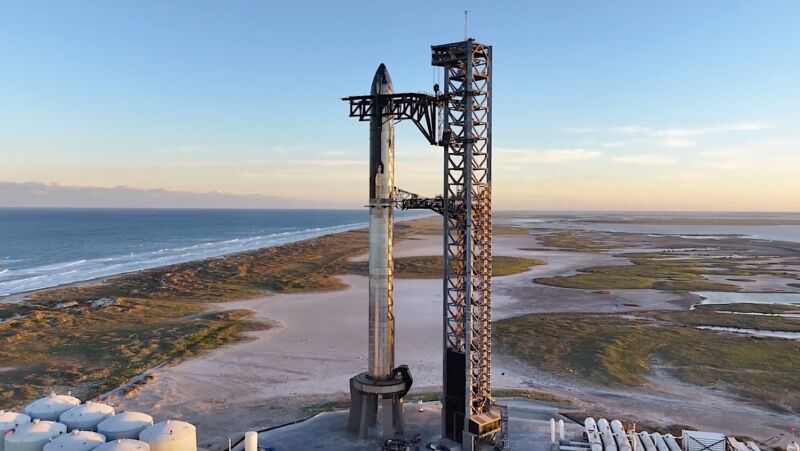
SpaceX
SpaceX will have answers to some burning in the first three minutes of the next Starship test flight. Did the upgrades to the Starship launch pad in Texas hold up to the rocket’s powerful thrust? Are the rocket’s Raptor engines more reliable than they were on the first Starship test flight in April? And did the rocket’s Super Heavy booster safely separate from the Starship upper stage?
The answers to these questions will show how quickly SpaceX can move forward with everything else it wants to do with Starship. These next steps include launching Starlink Internet satellites, which will expedite the network’s ability to directly connect with consumer cell phones. SpaceX needs to test in-orbit refueling for Starship flights to the Moon for NASA, and engineers want to demonstrate recovering Starship’s giant booster and upper stage, necessary steps to make the rocket fully reusable.
But first, the rocket needs to make it into space. That didn’t happen during Starship’s first full-scale test flight on April 20, but SpaceX learned a lot from that mission. Engineers learned they needed to beef up the launch mount, which took a beating from the Super Heavy booster as it generated more than 15 million pounds of thrust from its methane-fueled Raptor engines.
The upgraded launch pad includes a water-cooled steel plate underneath the pedestal that the Starship rocket sits on during the countdown. SpaceX believes this water deluge design will better handle the heat and acoustic energy from the Super Heavy booster during liftoff. When Starship took off in April, it blasted away concrete chunks from the launch and sent car-size pieces of debris into the surrounding wetlands. That’s something SpaceX wants to avoid this time.
Six of the 33 Raptor engines on the Super Heavy booster failed before liftoff or in flight on the April test launch. Propellant leaks and fires in the booster’s engine compartment eventually severed connection with the rocket’s primary flight computer, and the vehicle lost control a little more than two minutes into the flight. It reached an altitude of around 128,000 feet (39 kilometers), then exploded when a self-destruct mechanism finally engaged about four minutes after liftoff. Debris from the rocket rained down over the Gulf of Mexico.
Although SpaceX first revealed the rocket that became Starship seven years ago, the program is still very much in an experimental phase. Engineers are continually iterating on the design, finding problems, then fixing and testing them. So the second full-scale Starship test launch is, first and foremost, a learning exercise. But let’s face it—some outcomes are better than others.
What does SpaceX need to prove?
The second Starship test flight could happen as soon as next week, perhaps as early as Monday morning, from SpaceX’s launch base near Brownsville, Texas. The final thing standing in the way of a launch attempt is an environmental review by the Federal Aviation Administration and the US Fish and Wildlife Service.
Once that review is complete, which could happen this week, SpaceX will receive its FAA launch license. Technicians will install pyrotechnic charges on the Starship rocket to complete the arming of its flight termination system, the destruct mechanism needed to blow up the vehicle if it veers off course.
Then SpaceX will stack the Starship upper stage on top of the Super Heavy booster to create the fully formed, nearly 400-foot-tall (120-meter) launch vehicle, the largest rocket ever built. On launch morning, SpaceX teams will load more than 10 million pounds of methane and liquid oxygen into the two-stage rocket.
Then it’s go time. If all looks good, computers will issue the command to light the 33 Raptor engines clustered at the bottom of the booster. After a final health check, the automated countdown sequencer will give the green light for liftoff.

